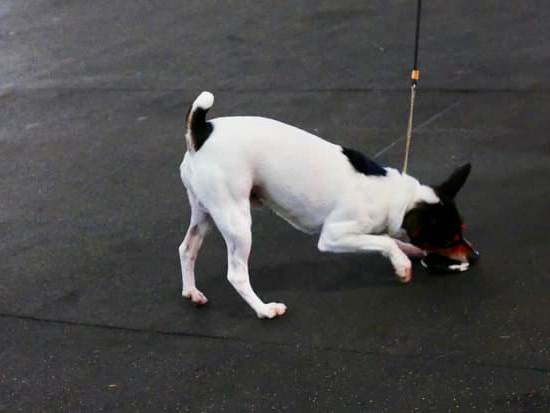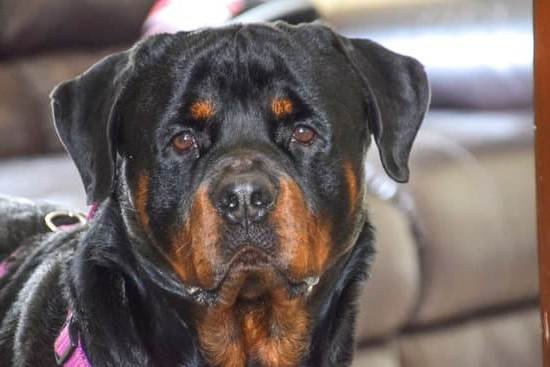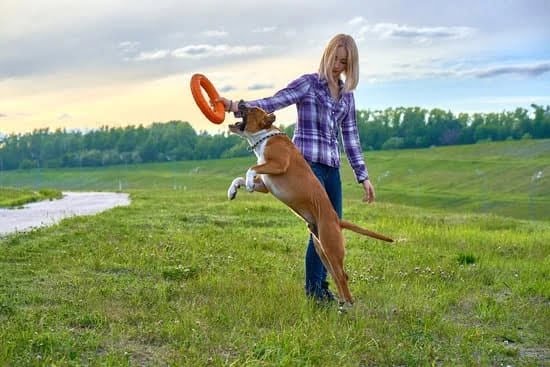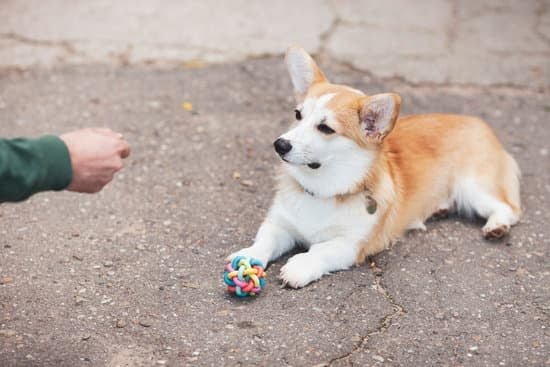Toilet training a dog can be challenging, but teaching an old dog is a whole different ball game. In this article, we will delve into the importance of toilet training for older dogs and explore effective techniques to help them learn this necessary skill.
Many pet owners assume that it is too late to train an older dog in toilet habits, but this couldn’t be further from the truth. Just like puppies, older dogs can be taught to use designated areas for their bathroom needs. Whether you have recently adopted an older dog or are dealing with long-standing bathroom issues, it is essential to address these problems for both the dog’s well-being and your own convenience.
Understanding the basics of dog toilet training is crucial before diving into the process. This includes debunking common misconceptions about the limitations of training an older dog. By assessing your dog’s current toilet habits, you can identify any underlying causes of the problem and create a plan tailored to their specific needs. Consistency and patience are key when establishing a routine for successful toilet training, which will be explored further in this article.
Join us as we explore effective techniques such as positive reinforcement and crate training that contribute to successful toilet training for older dogs. Troubleshooting accidents and setbacks along the way will also be covered, providing valuable insights on how to enforce good toilet habits effectively. Additionally, we will provide tips and tricks that address specific challenges faced in toilet training older dogs.
By maintaining these strategies in the long term, you can ensure consistent success in achieving proper toilet habits for your older dog. So let’s dive further into each step of this remarkable journey towards teaching an old dog new tricks when it comes to toilet training.
Understanding the Basics of Dog Toilet Training
Toilet training an older dog can often bring its own set of challenges and frustrations. However, it is important to understand that it is never too late to teach your canine companion proper toilet habits. Whether you have just adopted an older dog or are facing toilet training issues with a long-time furry friend, this section will delve into the reasons why it is possible and necessary to train an old dog.
One of the fundamental reasons why it is never too late to toilet train an older dog is their ability to learn new behaviors and adjust to changes in their routine. Dogs are highly adaptable creatures, capable of forming new neural connections even in their later years. With patience, consistency, and positive reinforcement, you can help your senior dog develop good toilet habits.
Another important aspect to consider when teaching an old dog toilet training is their physical health. Sometimes, older dogs may experience medical issues such as urinary tract infections or diseases that affect their bladder control. In such cases, it is crucial to consult with a veterinarian who can provide guidance on managing these conditions while working on training exercises. By addressing any underlying health issues, you can greatly improve your chances of success in toilet training your older dog.
Additionally, understanding the basics of how dogs think and relate to their environment will play a significant role in successful toilet training for older dogs. Dogs are instinctually inclined to keep their living space clean and establish boundaries for elimination. By tapping into these natural instincts and providing clear guidelines through consistent routines and positive reinforcement techniques, you can effectively communicate the desired behavior for toileting.
Assessing the Dog’s Current Toilet Habits
When it comes to toilet training an older dog, it is crucial to assess their current toilet habits and identify the root causes of any problems. This step is essential in developing an effective training plan tailored to address specific issues and ensure long-term success.
To begin, closely observe your dog’s behavior when it comes to toileting. Take note of how frequently they urinate and defecate, as well as any patterns or triggers that may be contributing to accidents. Is your dog displaying signs of anxiety or discomfort before eliminating? Are there specific areas in your home where accidents tend to occur more frequently? By gathering this information, you can start pinpointing potential factors that may be causing or reinforcing improper bathroom habits.
Health issues can also play a significant role in a dog’s toilet habits. It is essential to rule out any underlying medical conditions that could be contributing to frequent accidents or difficulties with toileting. Consult with a veterinarian who can conduct a thorough examination and address any potential health concerns that may need attention. Once medical issues are addressed or ruled out, you can focus on behavioral aspects of toilet training.
In addition to observing your dog’s current toilet habits, consider factors such as previous experiences, lifestyle changes, or recent disruptions that could potentially affect their bathroom behavior. Dogs are creatures of habit and may struggle with sudden changes or inconsistencies in their routine. This assessment will help guide you in identifying the root causes behind any potty training difficulties and allow for more targeted intervention strategies moving forward.
By thoroughly assessing your older dog’s current toilet habits, taking into account their behavior, health status, and environment, you will gain valuable insights into the reasons behind any challenges they may be facing with toilet training. Armed with this knowledge, you will be better equipped to develop a customized training plan focused on addressing these underlying causes for more successful and effective toilet training.
Establishing a Consistent Routine
Establishing a consistent routine is crucial for successful toilet training of an older dog. Dogs thrive on routine and predictability, and by implementing a structured schedule, you can help your furry friend develop good toilet habits. This section will guide you through the steps of creating a consistent routine for your older dog’s toilet training.
Firstly, it is essential to establish regular feeding times for your dog. Providing meals at the same time every day will help regulate their digestive system and make it easier to predict when they will need to relieve themselves. Take note of their bathroom behavior after each meal, as this will give you valuable insight into their elimination patterns.
In addition to regular meals, establishing set bathroom breaks throughout the day is vital. Take your older dog outside or to their designated bathroom spot on a leash every few hours, especially after waking up from naps or extended periods of rest. Be patient and wait with them until they have fully relieved themselves before returning indoors.
Creating a verbal cue or command for toileting can also be incorporated into your routine. Consistently using the same phrase like “go potty” or “do your business” while your dog eliminates can help them associate that command with the act itself. Over time, they will start to understand what is expected of them when they hear that particular phrase.
To track progress and identify any setbacks in toilet training, maintaining a detailed record is beneficial. Keep a journal noting down the times when your older dog successfully eliminates outside, as well as any accidents that occur indoors. This information will help you determine if adjustments are needed in the existing routine or if further training techniques should be implemented.
Implementing these strategies into your daily routine will promote consistency and pave the way for successful toilet training of your older dog. Remember that every dog is unique, and it may take some trial and error to find the routine that works best for them. Stay patient, provide positive reinforcement, and adjust the schedule as needed to set your older dog up for toilet training success.
| Steps | Benefits |
|---|---|
| Establish regular feeding times | Regulate digestion and predict bathroom needs |
| Create set bathroom breaks throughout the day | Encourage regular elimination outside |
| Incorporate a verbal cue or command | Help associate the command with toileting behavior |
| Maintain a detailed record of progress | Detect patterns, identify setbacks, and make necessary adjustments |
Patience and Positive Reinforcement
Understanding the Importance of Patience
One of the most essential qualities to have when teaching an old dog toilet training is patience. Unlike puppies, older dogs may have formed long-standing habits that are not easily broken. It is important to remember that accidents will happen and progress may be slow at times. Being patient with your dog during this process will help maintain a positive training environment and ensure that your furry friend feels supported and encouraged.
Using Positive Reinforcement Techniques
Positive reinforcement is a highly effective technique for toilet training dogs of any age. When your dog successfully eliminates in the designated area, it is crucial to reward them immediately and enthusiastically. This could include verbal praise, treats, or even playtime with a favorite toy. By consistently associating positive experiences with correct toileting behavior, your dog will begin to understand what is expected of them.
It is important to note that punishment should never be used during the training process. Yelling or scolding can confuse and stress your older dog, making it more difficult for them to learn proper toilet habits. Instead, focus on creating a supportive and encouraging environment that reinforces positive behavior through rewards.
Consistency Is Key
Consistency plays a vital role in effectively toilet training an older dog. Establishing a consistent routine helps your dog understand when and where they should eliminate. Make sure to take your dog out frequently, especially after meals or naps, as these are common times for dogs to need to relieve themselves.
Additionally, create a specific area for toileting outside and always take your dog there for elimination purposes. Dogs rely on routine and familiarity, so having a designated spot will help reinforce their understanding of where they should go.
By employing patience, utilizing positive reinforcement techniques, and maintaining consistency throughout the training process, you can effectively teach an old dog new toilet training tricks. Remember to stay positive and supportive, celebrating each success along the way. With time and dedication, your furry companion can learn to become fully toilet trained, providing both you and your pet with a happier and cleaner environment.
The Power of Crate Training
Crate training can be a powerful tool when it comes to toilet training an older dog. By providing a safe and comfortable space for your dog, crate training not only helps prevent accidents but also aids in establishing a consistent routine. In this section, we will explore the benefits of crate training and provide tips on how to effectively utilize this method for toilet training.
The Benefits of Crate Training
One of the main benefits of crate training is that it creates a den-like environment for your dog, which appeals to their natural instinct to have a secure and cozy space. It also helps in preventing accidents when you cannot directly supervise your dog, such as during nighttime or when you’re away from home. Crate training can help speed up the process of toilet training since dogs are less likely to soil their sleeping area.
Introducing the Crate
To begin crate training, start by introducing your dog to the crate gradually. Place treats or their favorite toys inside the crate and leave the door open. Encourage your dog to explore the crate at their own pace, without forcing them inside. Make sure that the crate is large enough for your dog to comfortably stand, turn around, and lie down in.
Establishing a Positive Association
Once your dog is comfortable entering and exiting the crate willingly, begin feeding them their meals inside the crate with the door closed. This helps establish a positive association between being in the crate and good things happening. Gradually increase the length of time they spend inside until they can stay comfortably for extended periods.
Avoiding Misuse
It’s important not to misuse the crate as a form of punishment or confinement. The goal is for your dog to view their crate as a safe and enjoyable space, not as a place where they are trapped or isolated.
Never use the crate as a way to solve behavioral issues or as a long-term solution for leaving your dog alone. Remember, the crate should be used as a training tool to aid in toilet training and provide a secure environment for your dog.
By utilizing crate training, you can provide your older dog with a safe and comfortable space while also aiding in their toilet training journey. Remember to introduce the crate gradually, establish a positive association, and avoid misuse of the crate. With patience and consistency, you can successfully help your old dog learn new toilet training tricks.
Enforcing Good Toilet Habits
Once you have established a consistent routine and started implementing positive reinforcement techniques for toilet training your older dog, it is important to be prepared for accidents and setbacks along the way. It is common for dogs of any age to have occasional accidents during the training process, so it is essential to handle these situations properly to reinforce good toilet habits. Here are some tips to help you troubleshoot accidents and setbacks during the toilet training process:
1. Stay calm: It can be frustrating when your dog has an accident indoors, but it is important to stay calm and avoid reacting negatively towards your dog. Punishment or scolding will not help with the toilet training process and may even cause your dog to become anxious or afraid.
2. Clean up properly: When accidents occur inside the house, it is crucial to clean up the mess thoroughly. Dogs have a strong sense of smell, and if they can detect any remaining scent of urine or feces in an area, they may continue using that spot as a designated bathroom area. Use an enzymatic cleaner specifically designed for pet stains to eliminate odors completely.
3. Increase supervision: Accidents often happen when dogs are left unsupervised or given too much freedom too soon during the toilet training process. Increase your supervision by keeping your dog in close proximity or confining them to a small space where accidents can be easily prevented.
4. Adjust the routine: If accidents occur consistently at certain times or after specific activities, such as eating or drinking, it may be necessary to adjust your dog’s routine accordingly. Take them outside more frequently before these triggering events to prevent accidents from happening.
5. Consider medical issues: If you notice that accidents are becoming frequent or your dog is showing other signs of distress, it is important to consult with a veterinarian. Some medical conditions, such as urinary tract infections or gastrointestinal issues, can cause accidents and setbacks in toilet training.
Remember, accidents and setbacks are a normal part of the toilet training process. By staying patient, consistent, and reinforcing positive behavior, you will be able to overcome these challenges and establish good toilet habits for your older dog.
Tips and Tricks for Older Dog Toilet Training
Older dogs may present some specific challenges when it comes to toilet training. However, with the right tips and tricks, these challenges can be addressed effectively. Here are some strategies to consider:
- Increase bathroom breaks: Older dogs may have a weaker bladder or bowel control, so they will likely need more frequent bathroom breaks. Start by taking your dog outside every two hours to give them ample opportunities to eliminate. Gradually increase the time between breaks as your dog becomes more successful in holding their bladder or bowel.
- Monitor water intake: Keep an eye on how much water your older dog is consuming, especially before bedtime or periods of confinement. Limiting water intake during these times can help reduce accidents inside the house.
- Manage diet and feeding schedule: Adjusting your dog’s diet and feeding schedule can also contribute to successful toilet training for older dogs. Feeding them at consistent times each day will help establish a predictable routine for elimination. Additionally, paying attention to the type of food you feed your dog can make a difference. For example, if your dog has loose stools or diarrhea, consulting with a veterinarian about dietary changes might be necessary.
- Use indoor potty options: In some cases, older dogs may have difficulty making it outside in time due to mobility issues or health conditions. Consider providing indoor potty options such as pee pads or artificial grass patches that simulate outdoor surfaces. Place these options in designated areas and gradually move them closer to the door over time to encourage eventual outdoor elimination.
- Address anxiety and fear: Older dogs may develop anxiety or fear related to toileting accidents or previous negative experiences. This can hinder their progress in toilet training. It is important to address any underlying emotional issues through positive reinforcement techniques and creating a calm and supportive environment for your pet.
Remember that consistency and patience are key when addressing specific challenges in toilet training an older dog. By implementing these tips and tricks, you can overcome these challenges and help your furry friend gain confidence and success in their toilet training journey.
Maintaining Success
Once you have successfully toilet trained your older dog, it is important to maintain their good habits to prevent any future accidents. Here are some long-term strategies that can help you ensure consistent toilet training:
- Stick to the established routine: Dogs thrive on consistency and routine. It is crucial to continue following the established toilet training schedule even after your older dog has learned the proper toilet habits. This means taking them outside at the same times every day, including after meals and naps. By sticking to a routine, you reinforce the desired behavior and reduce the chances of accidents.
- Be proactive in preventing accidents: Even though your dog may be successfully toilet trained, there may be instances where they have an accident in the house due to various reasons such as illness or changes in their environment. To prevent accidents, pay close attention to their body language and take them out immediately if they show signs of needing to eliminate.
Additionally, when introducing any changes or new experiences, such as moving to a new house or having guests over, be extra vigilant and provide extra potty breaks as needed. - Regular exercise and mental stimulation: Physical activity and mental stimulation are essential not only for your pet’s overall well-being but also for maintaining good toilet habits. Adequate exercise helps regulate bowel movements and encourages regular elimination patterns in dogs. Mental stimulation through activities like puzzle toys or obedience training keeps them mentally engaged and reduces anxiety that could lead to accidents inside the house.
| Strategy | Description |
|---|---|
| Stick to the established routine | Continue following the established toilet training schedule even after your older dog has learned the proper toilet habits. |
| Be proactive in preventing accidents | Pay close attention to your dog’s body language and take them out immediately if they show signs of needing to eliminate. Provide extra potty breaks during periods of change or new experiences. |
| Regular exercise and mental stimulation | Adequate exercise helps regulate bowel movements and encourages regular elimination patterns in dogs. Mental stimulation reduces anxiety that could lead to accidents inside the house. |
By maintaining these long-term strategies, you can ensure consistent toilet training for your older dog, reducing the chances of accidents in the future and promoting a happy and healthy living environment for both you and your furry companion. Remember that patience, positive reinforcement, and consistency are key throughout the entire toilet training process. With time and practice, your older dog will become fully toilet trained, providing you with peace of mind and a well-behaved pet.
Conclusion
In conclusion, teaching an old dog toilet training is not only possible, but it can also be a rewarding experience for both the owner and the dog. While there may be challenges along the way, understanding the basics of toilet training and assessing the dog’s current habits are crucial first steps. Establishing a consistent routine and utilizing positive reinforcement techniques will help reinforce good toilet habits.
Another powerful tool in toilet training an older dog is crate training. Providing a safe and comfortable space for the dog can assist in developing good bathroom habits. Enforcing these habits and troubleshooting accidents and setbacks will require patience and persistence, but with time, consistency, and understanding, success can be achieved.
Moreover, addressing specific challenges that may arise during toilet training is important. Each older dog may have unique needs or behaviors that need to be addressed individually. By modifying strategies to cater to these challenges, owners can better support their dogs in achieving success.
Lastly, maintaining long-term success is key to ensuring consistent toilet training habits. Owners should continue to reinforce positive behaviors and provide access to appropriate bathroom areas at all times. With dedication and care, teaching an old dog new tricks when it comes to toilet training can bring about a sense of accomplishment for both the owner and their beloved companion.
Frequently Asked Questions
Can an older dog still be potty trained?
Yes, an older dog can still be potty trained. While it may take a bit more time and consistency compared to puppies, it is definitely possible.
Older dogs may have developed certain habits or learned to go potty in inappropriate places, but with the right approach and patience, they can be retrained. It is important to understand that older dogs might have underlying medical conditions that could contribute to their bathroom behavior, so ruling out any potential health issues with a veterinarian is crucial.
What is the best way to potty train an older dog?
The best way to potty train an older dog is through positive reinforcement and consistency. Utilizing a crate or confining them to a small area when unsupervised can help prevent accidents and encourage them to hold their bladder until taken outside.
Establishing a regular schedule for feeding and bathroom breaks is also essential in teaching them where and when to go potty. Rewarding them with treats or praise immediately after they eliminate in the designated spot reinforces the desired behavior.
What age is too late to potty train a dog?
There isn’t necessarily an age that is “too late” to potty train a dog, as each individual dog is different. However, it may become more challenging as the dog grows older due to ingrained habits or potential health issues that affect urinary control.
Generally speaking, starting as early as possible is recommended for optimal success in potty training. However, even if a dog hasn’t been properly trained earlier in life, consistent training methods can still yield results regardless of age.

Welcome to the blog! I am a professional dog trainer and have been working with dogs for many years. In this blog, I will be discussing various topics related to dog training, including tips, tricks, and advice. I hope you find this information helpful and informative. Thanks for reading!





